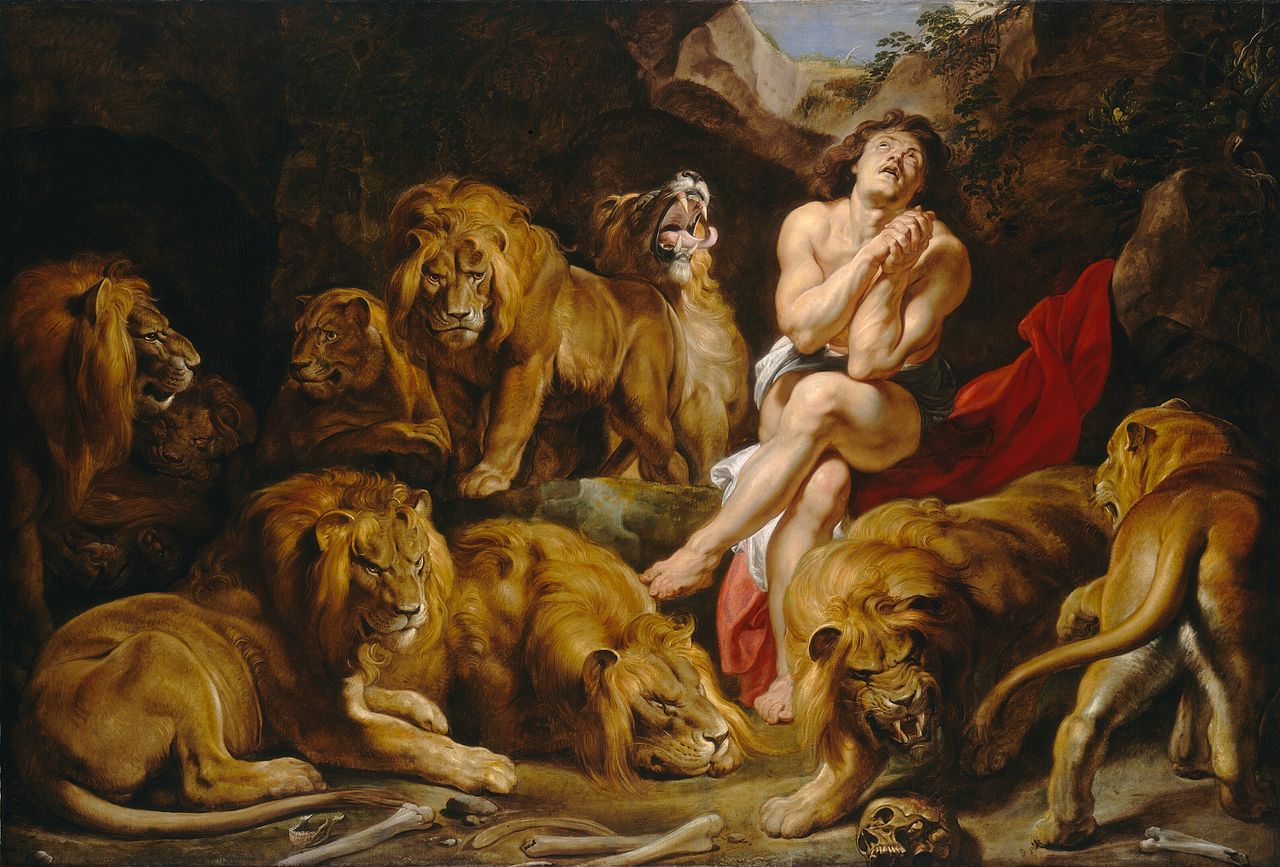Daniel in the Lions' Den by Peter Paul Rubens, Daniel 6, Bible.Gallery
Artwork Description

The Old Testament Book of Daniel recounts how the biblical hero was condemned to spend the night in the lions' den for worshipping God rather than the Persian king Darius. Depicted here is the following morning when, after the stone sealing the entrance was rolled away, Daniel gives to God for having survived the night safely. For theologians, the image of Daniel being freed from the cave symbolized the resurrection of Christ from the sepulcher.
Rubens masterfully combined realism and theatricality in order to produce a strong emotional impact. Several of the lions, for instance, stare directly at the viewer, creating a suggestion that the spectator shares the same space as the lions, and thus, like Daniel, experiences the same menace of the savage predators. This immediacy is heightened by the fact that the beasts are portrayed full size on the huge canvas and depicted with convincing realism. The lifelike movement of the lions and their superbly rendered fur results from Rubens' direct observation and sketches made in the royal menagerie in Brussels. Complementing this veracity is the dramatic lighting and the exaggerated emotionalism of Daniel's prayerful pose.